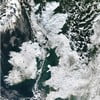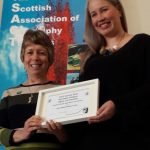 Our award winning, online weather and climate CPD course for secondary geography teachers, Come Rain or Shine, is starting its 9th run on the FutureLearn platform on the 10th of June.The course is also suitable for older students to take.
Our award winning, online weather and climate CPD course for secondary geography teachers, Come Rain or Shine, is starting its 9th run on the FutureLearn platform on the 10th of June.The course is also suitable for older students to take.
It will run for 15 weeks. During the 1st 3 weeks (until 30th June), expert mentors will be on hand to answer questions and respond to comments.
Access is free for 5 weeks from whenever you start the course.
The learning objectives for the course are:
- Describe the weather features associated with depressions, anticyclones and the four main air masses which affect the UK.
- Interpret a synoptic or weather chart, to provide details about wind speed and direction, precipitation and cloud cover.
- Describe some of the physical processes which give rise to weather, such as convection, condensation, pressure gradients and the Coriolis force.
- Investigate local weather conditions using readily available instruments.
- Explain some of the processes which transfer energy through the Earth system, including the transient effects of volcanoes and changes in the Earth’s orbit, and how these processes relate to the Earth’s climate.
- Apply an understanding of mid-latitude weather systems to the analysis of weather data and images.







 s large swathes of the country are affected by snow, the question of how long it will last and whether we’ll get a white Christmas becomes important – and a great way to revise some weather processes.
s large swathes of the country are affected by snow, the question of how long it will last and whether we’ll get a white Christmas becomes important – and a great way to revise some weather processes. Photo credit: Lucy Cunningham
Photo credit: Lucy Cunningham
